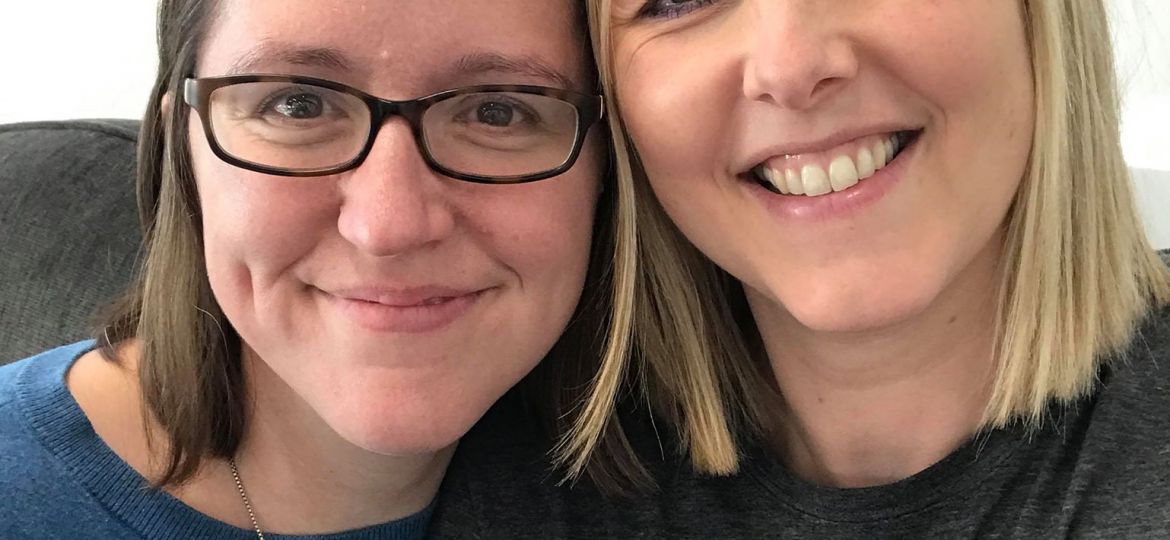
Hello! Many of you may recognize my face as Kristin Sauter, Client Relationship Manager for SNoW Co. However, this is my first time as a guest writer! Something that I am very passionate about, and how Sarah and I truly connected when we first met, is mental health. I have battled anxiety since my young adult years and call myself a ‘socially anxious extrovert.’
Here’s the truth: my anxiety rears its head in high stress work environments. Where did I work before I moved to Iowa and worked for Sarah? You guessed it: in a highly competitive, very stressful corporate environment in London, England. My mental well being suffered greatly during this time. I think, like many working adults, I thought that an unsupportive environment was normal. That it was up to only me to manage my mental health in the workplace. There was this silent rule that you checked your baggage as soon as you entered the office doors. And during working hours, that baggage stayed at the door. I felt as if I wasn’t allowed to bring my whole self. I wasn’t allowed to bring up the Kristin that was suffering because of everyday crippling anxiety. And so I silently suffered and eventually made the drastic decision to not only leave my job, but my entire career.
The next, and very exciting, chapter of my work life began in the summer of 2018 when I met Sarah. If you’ve been a reader of this newsletter for a while, you know that Sarah is very open and vulnerable about her own mental health story. When we met in person, this is how we truly connected. Our shared and outspoken passion for mental health sparked an electric need in both of us to work together in some capacity. That moment when she told me about her struggles set the tone for our work relationship. The moment a leader is vulnerable, it creates a safe environment for their team members.
I’ve been reflecting on what the key differences are between the environment at SNoW Co. and my previous work. I admit that we are a smaller team and that lends itself to a certain amount of luxuries, but the key differences I noticed can be applied to any team or business, no matter the size.
Flexibility
Struggles with mental health don’t magically disappear when we walk through the doors of the office. They seep into every aspect of life. I also understand that work has to get done. Work doesn’t stop because of an anxiety attack. One of the best things that can be offered is flexibility for how work gets done. My peer Teresa recently shared a story that a man was offered accommodations for his work schedule. He was allowed to work from home due to some mental health battles. He reported that he was moved to work harder because he appreciated having those accommodations. The more you give space to be vulnerable, the more people are willing to give.
Be Explicit
I find a common theme in unsupportive environments is that there is a silent rule that you aren’t allowed to show up with all your human traits at work. No one directly tells you that you can’t talk about your mental health struggles, but the silent nature of focusing on productivity and results over people and progress reigns supreme. On the flip side, supportive environments tend to be very explicit that team members are more than work horses. These leaders are very explicit that it’s OK to show up as human. They themselves have probably shown vulnerability, leaving the door wide open for their team members to feel supported. They set the expectation that our humanness is OK.
Check Your Values
Yes, a business has to make profit and employees are a key part of that. But that does not mean that should be the only emphasis for team members. In my previous work, profit and money were highly sought after and valued business drivers. And we were rewarded only on these merits. For me, a key driver in my work is being surrounded by people I enjoy and loving what I do. So having the focus only be on money squelched how I could show up. It left me feeling stagnant as an employee and always preparing for the worst case scenario.
On team SNoW Co. we’ve created a business environment that emphasizes people and their growth. It’s more about the progression and journey as an individual and team rather than the outcome. We also celebrate one another for our vulnerability. Our Facebook group chat is filled with messages of “ladies, I am struggling today. I need your support.” We have each other’s backs when the going gets tough. We don’t just preach vulnerability. We show up with our hearts on our sleeves.
I’ll leave you with these final questions: What could be possible if we didn’t hide our pain, physical or mental? How can you break down the barriers to vulnerability for your team?

